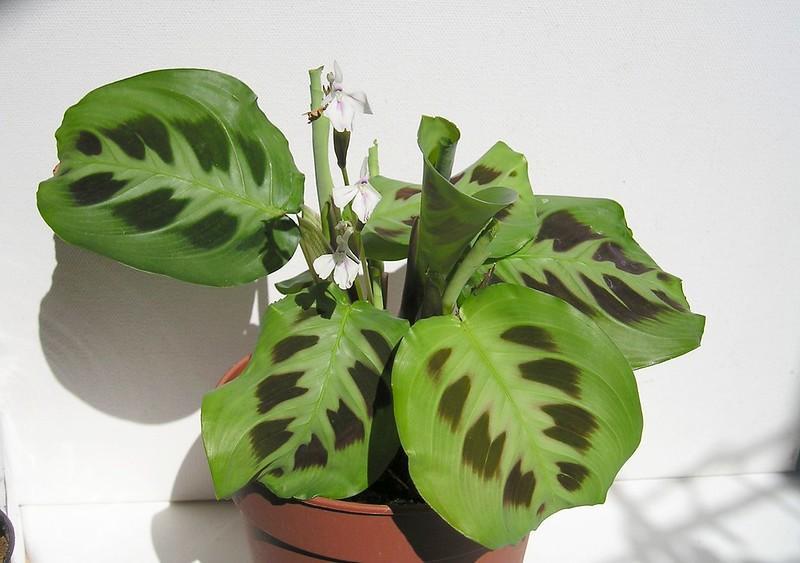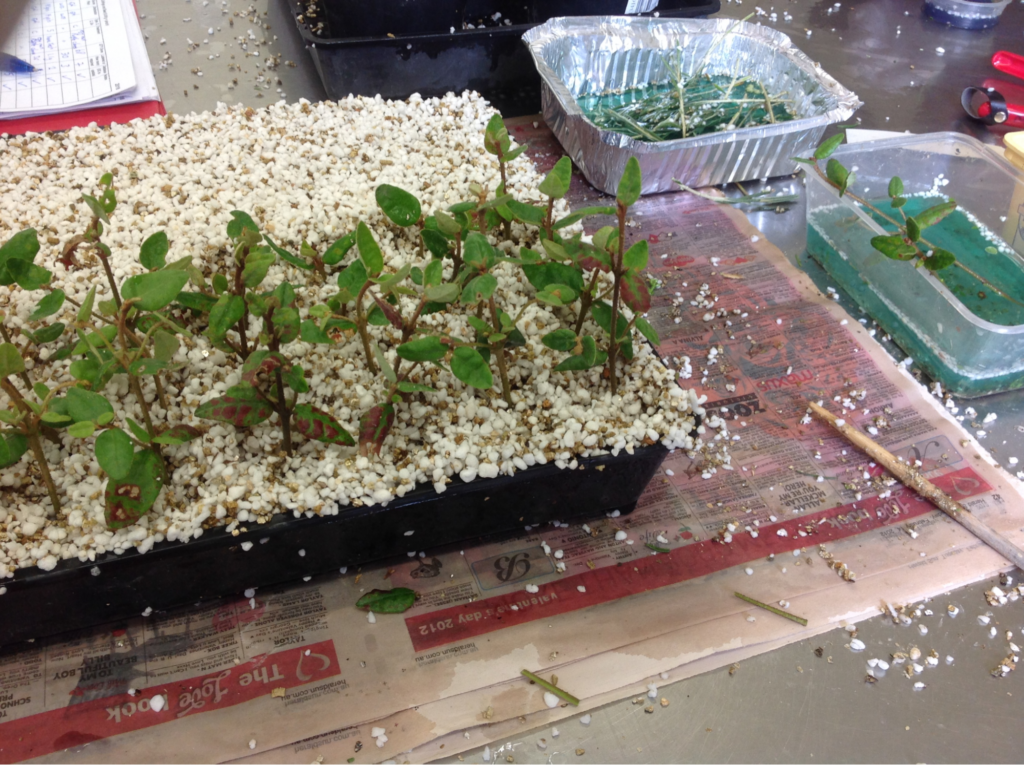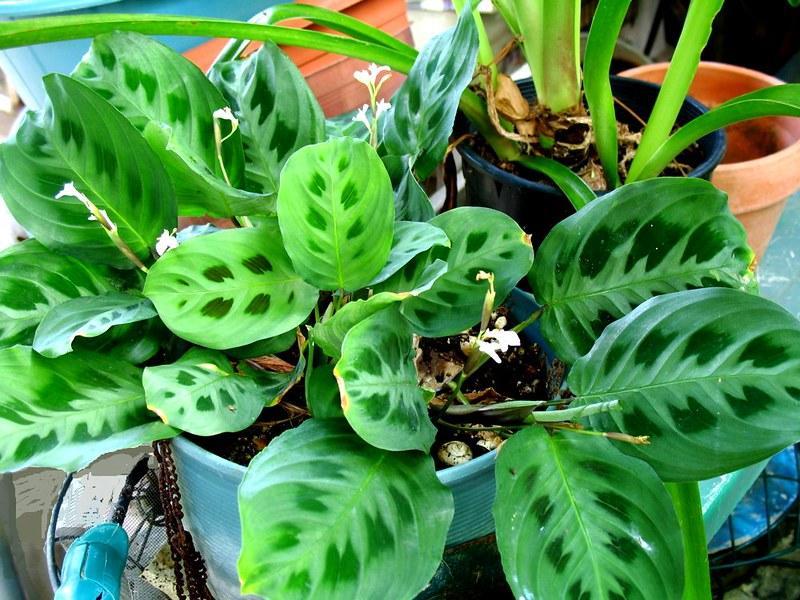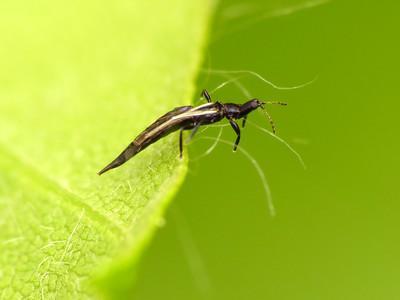It is always exciting and interesting to grow a new plant that you can add to your plant collection or give to your friends. And plant lovers are all aware that prayer plants are ideal for this purpose because they are simple to cultivate and require little maintenance. In this article, learn how to propagate prayer plants.

All Calathes, or ‘prayer plants,’ belong to the genus Maranta, which is closely linked to the genus Calathea.
In addition, due to the colorful patterns on their leaves and the fact that they are tolerant of shade, prayer plants are frequently used in residential gardens. But how exactly does one go about cultivating and propagating a prayer plant? Well, it is easy! For instance…
You can propagate your prayer plants using stem cuttings in either water or soil if they contain a node where new roots and shoots can grow.
Another method for propagating new plants is called division, in which the roots of the existing plant are cut up into smaller pieces and then replanted in their own individual containers, and there they will ultimately give rise to new plants.
So, if you also want to propagate your prayer plants, read on! We will discuss how to take the perfect prayer plant cutting, root it, and then plant it in the soil.
Let’s get started…
What Is Plant Propagation?

The term “plant propagation” refers to any method used to multiply a plant species or cultivar.
The term “propagation” refers to the process of creating several duplicates of a plant from the original parent plant.
This can be accomplished through sexual reproduction as well as through asexual reproduction. During the process of sexual reproduction, plants develop flowers, which are then used to pollinate, fertilize, and change into seeds.
These seeds can then be put into the soil, where they will eventually sprout into new plants. Asexual reproduction, on the other hand, involves the development of new plants by the use of vegetative elements such as roots, stems, leaves, and bulbs.
Now, in the wild, a stem may fall off the plant naturally and land on the ground, where it may then establish roots that take hold in the soil if the conditions are appropriate.
But if you want to propagate prayer plants at home, you don’t have to wait for nature to run its course; instead, you can do it all by yourself. Keep reading to find out how!
Related: Losing Faith in Your Prayer Plant? How to Save Your Curling Leaves
Types Of Propagation

Prayer Plants are most often propagated using stem cuttings or division.
Let’s go over the many techniques for propagation one by one, but before we do so, we need to know where on the prayer plant we should make our cuts to create plant pieces for propagation.
Look for a branch on the parent plant that is at least 3 inches long, has healthy new growth and leaves, and can be cut off without damaging the plant.
The next thing you need to do is make an incision directly beneath the first node of a stem. The leaf nodes appear as little lumps and are the locations on the plant that will sprout roots in either water or soil, depending on where the nodes are placed.
Now that you have the stem cutting, you can propagate the prayer plant by:
1. Propagation In Water
Take a stem cutting from the parent prayer plant that contains a node as well as a few leaves and place it into a jar that is filled with room temperature water.
Make sure the leaves stay above the surface of the water at all times. The next step is to put the jar in a location where it will be exposed to a lot of direct and bright sunlight. Then, the plant should be left alone, and the water should be replaced as needed.
Because of the cutting, the node will eventually become the site of new root growth. After a few weeks to a month, your plant’s root system should have developed to the extent that it covers approximately two to three inches, at which point you can plant it into the soil.
2. Propagation From Seed
You need physical access to the seeds in order to be able to start new prayer plants from scratch. But, despite their rarity, flowers on an indoor prayer plant are not unheard of. And, since prayer plants self-pollinate, you only need one of them to get seeds from.
As soon as you get your hands on the seeds, you should immediately place them in a seedling starter tray and then cover them with plastic to keep the humidity high.
When the seedlings have reached a height of a few inches, remove the plastic cover and allow them to continue growing for some time. This will allow the stem to become hard and sturdy, and you will then be able to begin treating it as an adult prayer plant.
3. Propagation In Soil
Although it is similar to water propagation, soil propagation does not require the use of water for the rooting process. Also, when compared to propagation in water, the process is far more straightforward when carried out in the soil.
The most significant disadvantage, however, is that it takes the cutting a longer time to create roots in the soil, and you are unable to watch the growth of the roots as they grow. Begin by burying the cutting of the stem in the soil.
As the roots grow, be sure to keep the soil moist. After that, relocate the cutting to an area that receives bright, indirect light. You can also cover it with a clear plastic bag if you want to further assist in retaining the moisture.
However, you should remove it every other day so that fresh air may circulate inside the space. After you have put the cuttings in the soil and it has been a few weeks, give the cutting a very mild tug to see if the roots have taken hold or not. If they have, then you can proceed with the next step.
If it is firm, this indicates that the roots have grown from the cutting, and you can treat it the same way you would any other plant.
4. Propagation By Root Division
Root division is another method for propagating prayer-plant, and this method can be used if your plant is large enough and has multiple stems that have emerged from the ground.
Take the prayer plant out of its pot, then use your hands to clean it and “untangle” the roots as much as possible. After you have finished cleaning the roots and untangling them, the stems that were linked at the roots are now free, and you may plant these newly separated stems in different pots that contain freshly prepared potting soil.
Maintain a warm and humid environment for the pots while the plants are establishing themselves. Also, these plants that have been divided often do not require a great deal of additional care because they already have a robust root system.
How To Care For A Prayer Plant
Following are some of the practices that we recommend for the upkeep of prayer plants:
Keep Your Prayer Plants Warm
These tropical plants thrive at temperatures between 65 and 75 degrees Fahrenheit during the day and no lower than 55 and 60 degrees Fahrenheit at night.
Keeping the temperature at a lower level for extended periods of time might cause the leaves to become damaged and eventually fall off the plant.
Protect Prayer Plants From Direct Sunlight
You can either suspend the prayer plant from the ceiling or arrange it close to a window that gets indirect sunlight. Prayer plants are susceptible to damage when exposed to direct sunlight.
That is why you should never put your plant where it will be exposed to direct sunlight because doing so will either cause the leaves to become charred or to develop blotches or spots and cause it to fade.
Fertilize Your Prayer Plants Properly
During the growing seasons of spring, summer, and fall, prayer plants can benefit from a general-purpose houseplant fertilizer applied once every two weeks. For information on how much to use, refer to your product’s instructions to avoid overdosage.
Provide A Humid Environment
You should either set your prayer plants in a humid environment, like the kitchen or the bathroom, or you should mist them regularly, even on a daily basis. You can also keep the plants together or use a humidifier to boost the relative humidity in the area.
You can also place them on trays with some water and stones already in them.
However, to prevent root rot from occurring, as a result, it is essential to prevent the bottoms of the pots from collecting too much water.
Types And Which Prayer Plant You’d Choose

Prayer plants (Maranta) grow easily and stay small, making them perfect for compact settings.
When it comes to propagating prayer plants, you have a wide variety of options available to choose from. The following section will go over a few of them.
Lemon Lime
The lemon lime prayer plant has green leaves that are patterned in lemon and lime colors all over them. It has a superficial resemblance to the red prayer plant; however, rather than having red veins, it has beautiful green ones.
Maranta leuconeura
Maranta leuconeura, commonly known as ‘Kim,’ is a low-growing prayer plant with green leaves with purple spots and creamy white streaks.
Maranta leuconeura
The leaves of this tropical plant, which is frequently referred to as the “black prayer plant,” is silver-blue in color, with purple patches running down the central veins.
Maranta Erythroneura
It is also referred to as the red prayer plant. This plant’s glossy, dark green leaves are highly sought after because they feature lighter green patterns and crimson veins.
Prayer Plant Pest Issues

Spider mites, mealybugs, and aphids are the most common pests of Prayer Plants.
Prayer Plants are susceptible to a number of insect pests. Some of them are:
Thrips
Because of their small size and propensity to blend in with the patterned and colorful leaves of a Prayer Plant, thrips are difficult to spot when they are present on one of these plants. However, they cause significant damage to the plant by boring holes in the leaves and then sucking out the nutrients.
You may keep thrips under control by applying an insecticidal soap. Mix together two teaspoons of pure soap, one-half teaspoon of vegetable oil, and one quart of water, and then spray the resulting concoction onto the leaves of prayer plants.
Related: How To Get Rid Of Thrips On Houseplants For Good? The Ultimate Guide
Mealybugs
Mealybugs are very little insects that feed on prayer plants by drawing nutrients out of the plant’s tissues with their sucking mouthparts.
However, mealybugs are capable of causing significant harm in a very short amount of time, making the prompt eradication of these pests an absolute necessity.
Prayer plants infested with mealybugs can be saved by treating them with neem oil once a week until the pests are gone.
Related: How To Get Rid Of Root Mealybugs For Good? A Comprehensive Guide
Spider Mites
Prayer plants attract more spider mites than any other houseplant or garden plant combined. Spider mites cause damage to the prayer plants by poking holes in the leaves, which eventually become yellow after beginning as white. In addition, the spider mites living on your lovely prayer plant may eventually cover it with unsightly webs over time.
In order to rescue the other plants in your yard or living room, you should remove and quarantine the prayer plant that is afflicted with spider mites.
Then, spray the plant with water from a water jet, and then use a piece of cloth to wipe down all of the leaves and stems. After that, you should spray the prayer plant with neem oil so that you can kill any spider mites that are still present and prevent them from returning.
Conclusion
Learning how to propagate prayer plants is a simple task since it is truly rather simple to do so, as these plants can spread like crazy. There are a few different methods for propagating a prayer plant, with water propagation being the most common and fruitful one.
The prayer plant I have in my home has beautiful leaves in various colors. The combination of pink and red is stunning and one of a kind.
There are more than 50 different types of prayer plants, so if you have a passion for them, you should try to gather and propagate some of them.
Frequently Asked Questions
Can you propagate a prayer plant in water?
A prayer plant can, in fact, be easily propagated through the use of water as a medium. To start the process of propagating the prayer plant in water, you must take a pair of sterile shears and snip off a piece of the plant just below a node. The node must be included in the cutting because this is the location from which new roots will emerge.
What are the balls on prayer plant roots?
There are varieties of prayer plants that have little balls on their roots. These are known as nodules, and they are where the energy of prayer plants is stored. Therefore, if you find them on your prayer plant, you need not be concerned because this is very natural.
How long do prayer plants live?
Your Prayer Plant will only live for a few months at most if you don’t give it the attention and care it needs to thrive. You shouldn’t be able to maintain your plant alive for forty or even seventy years if you provide it with the proper care and maintenance.
Should I cut off the brown leaves on the prayer plant?
A damaged leaf cannot recover from its condition and will inevitably die and fall off the plant. So, if you notice yellowing or browning leaves, or if a leaf is damaged or broken off your Prayer Plant, just trim it off. It will keep your plant looking healthy and in good condition.
Why is my prayer plant leggy?
If prayer plants do not receive sufficient light, they will develop spindly stems and appear leggy. The leaves of a Prayer Plant will adjust their position, so they are closer to the light source, which is typically the nearest window. The plant makes an effort to obtain sufficient sunlight to sustain itself by developing stems to greater heights.
Sources For Further Reading
What is a prayer plant? – UF/IFAS Extension Nassau County. (2017). Retrieved 23 October 2022, from https://blogs.ifas.ufl.edu/nassauco/2017/06/21/q-prayer-plant/
Editor’s Recommendations
How To Save An Overwatered Peace Lily From Dying? A Comprehensive Guide
Why Are My Calathea Leaves Curling, And, How To Fix It Fast?
Morel Mushrooms: Key Steps in Growing These Rare and Delicious Mushrooms







